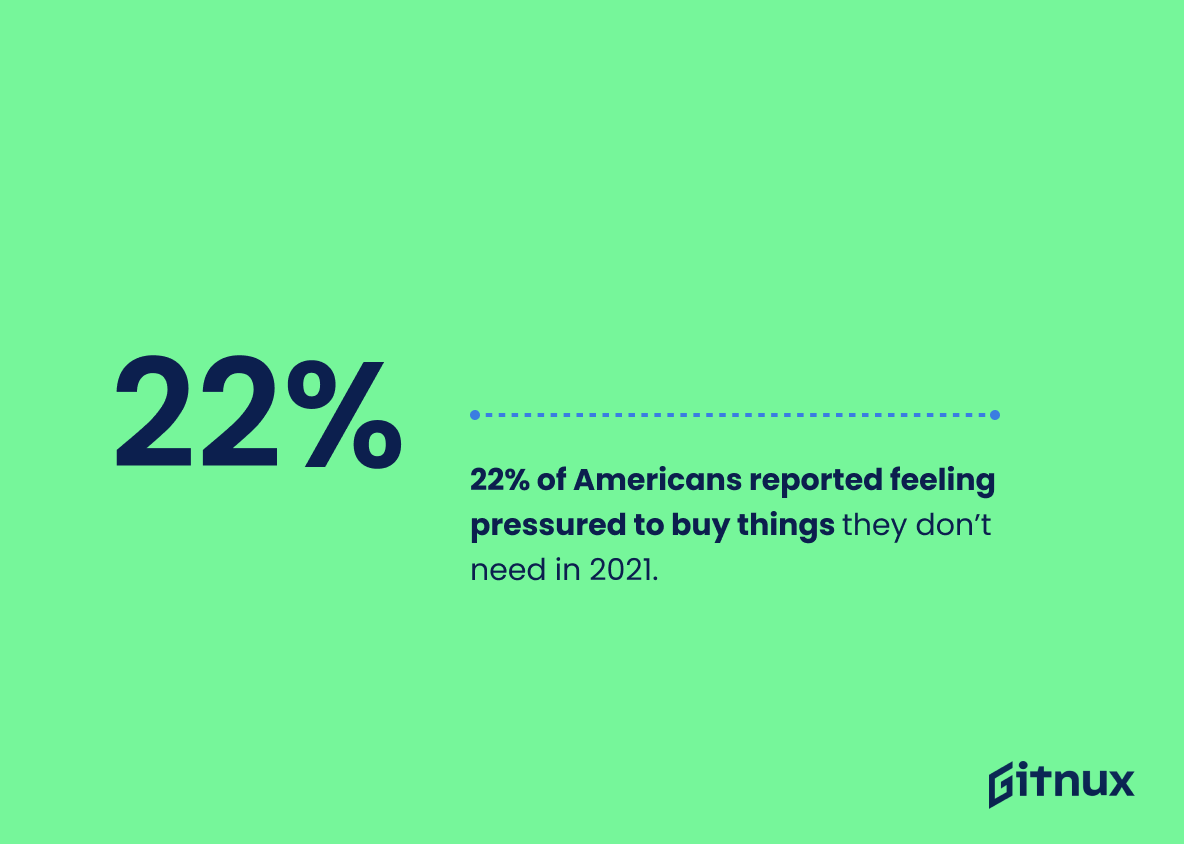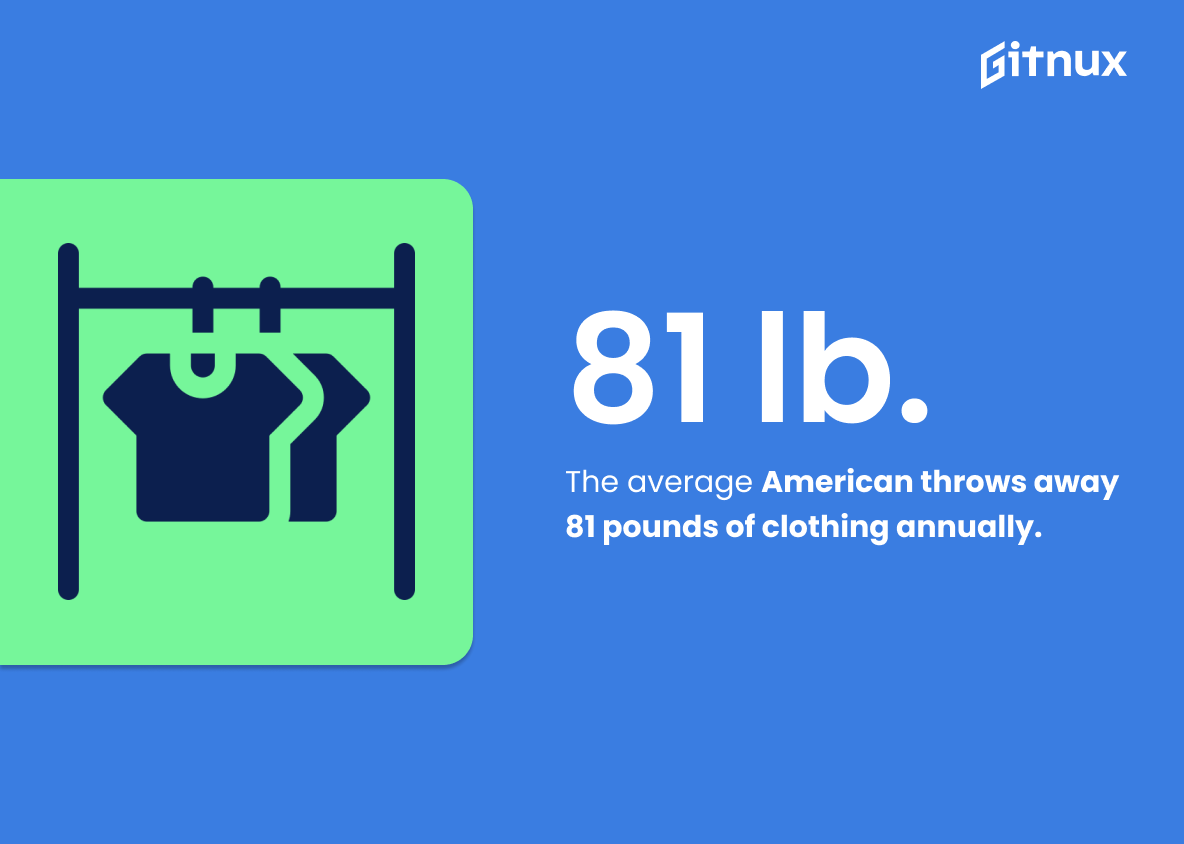Americans are notably materialistic, with 70% acknowledging society’s excessive materialism per Greater Good Magazine. Young adults (87% of 18-25 year-olds) prioritize buying and owning items, reflected in the $65,098 average household expenditure on consumer goods in 2020. This accounts for 30.3% of global retail sales.
Many Americans feel pressured to buy unnecessary items, with 63.5% carrying credit card balances. The fashion sector, the largest in e-commerce, generated about $667 billion last year, underscoring the preference for new products over durable or reused ones. Social pressures also influence spending; 84% perceive increased materialism in society, and 72% experience peer pressure regarding possessions. Holiday spending exacerbates this, with 25% unable to control spending and 48% feeling obliged to overspend on gifts, leading to nearly $1 trillion spent on nonessential goods. This trend suggests an ongoing cycle of consumption driven by social influences and a focus on material possessions.
This statistic is a powerful indicator of the pervasive attitude of Americans towards materialism. It shows that the majority of Americans are aware of the negative effects of materialism and are concerned about its prevalence in society. This statistic can be used to illustrate the need for a shift in values and attitudes towards a more sustainable and meaningful lifestyle. It can also be used to highlight the importance of reducing consumption and promoting a more conscious approach to living.
87% of young Americans aged 18 to 25 think it’s important to buy and own things.
This statistic is a telling indication of the materialistic values held by young Americans. It suggests that the majority of this age group prioritize buying and owning things, which is reflective of the materialistic culture that has become pervasive in the United States. This statistic is important to consider when discussing American materialism, as it provides insight into the attitudes of a key demographic.
American Materialism Statistics Overview
In 2020, the average household spent $65,098 on consumer goods.
This statistic serves as a stark reminder of the prevalence of materialism in American society. It highlights the amount of money that households are spending on consumer goods, which could be indicative of a culture that values material possessions over other aspects of life. This statistic is a powerful illustration of the extent to which materialism has become ingrained in American culture.
The US is responsible for 30.3% of the world’s total retail sales.
This statistic serves as a stark reminder of the sheer magnitude of American materialism. It highlights the fact that the US is responsible for a significant portion of the world’s total retail sales, indicating that the country is a major consumer of goods and services. This statistic is a testament to the power of American materialism and its influence on the global economy.
22% of Americans reported feeling pressured to buy things they don’t need in 2021.
This statistic is a stark reminder of the prevalence of materialism in American society. It highlights the fact that many people feel compelled to purchase items they don’t need, likely due to the influence of advertising and marketing. This statistic is an important indicator of the extent to which materialism has taken hold in the United States, and it serves as a warning that more needs to be done to address this issue.
63.5% of American families have a credit card balance, indicating materialistic spending habits.
This statistic serves as a stark reminder of the prevalence of materialistic spending habits among American families. It highlights the fact that a majority of households are carrying a credit card balance, suggesting that they are prioritizing material possessions over financial security. This statistic is an important part of the overall picture of American materialism and provides insight into the spending habits of the nation.
84% of surveyed Americans believe their fellow citizens are more materialistic than they were in the past.
This statistic is a telling indication of the current state of American materialism. It suggests that the majority of Americans recognize that their fellow citizens have become more focused on material possessions than in the past. This is an important insight to consider when discussing the prevalence of materialism in the United States, and it should be included in any blog post about American materialism statistics.
The average American throws away 81 pounds of clothing annually.
This statistic serves as a stark reminder of the excessive materialism that has become so pervasive in American culture. It highlights the fact that Americans are not only buying more clothing than ever before, but they are also disposing of it at an alarming rate. This statistic is a testament to the fact that Americans are not only consuming more than ever before, but they are also wasting more than ever before.
Americans spent $329.62 billion on electronics and appliances in 2020.
This statistic is a telling indication of the materialistic nature of Americans in 2020. It shows that despite the economic downturn caused by the pandemic, Americans still had the means and the desire to purchase electronics and appliances. This speaks to the consumer culture that has become so prevalent in the United States, and it is a reminder of the importance of material possessions in our society.
US consumers spent approximately $174 billion on cars and auto parts in 2020.
This statistic is a telling indication of the materialistic nature of American consumers. It shows that despite the economic downturn caused by the pandemic, US consumers still had the means and the desire to spend a whopping $174 billion on cars and auto parts. This speaks to the importance of material possessions in American culture, and how they are seen as a sign of success and status.
In 2020, consumer spending on jewelry amounted to $37.52 billion in the United States.
This statistic serves as a stark reminder of the prevalence of materialism in the United States. It highlights the fact that Americans are willing to spend billions of dollars on jewelry, a luxury item, despite the economic hardships of 2020. This statistic is a testament to the power of materialism in American culture.
64% of Americans have felt buyer’s remorse after making a purchase, indicating materialistic/bad spending decisions.
This statistic serves as a stark reminder of the prevalence of materialism in American society. It highlights the fact that many Americans are making purchases that they later regret, suggesting that they are prioritizing material possessions over more meaningful experiences. This statistic is an important part of the overall picture of American materialism and can help to inform readers about the current state of consumer culture in the United States.
25% of Americans claim that they can’t control their spending.
This statistic serves as a stark reminder of the prevalence of materialism in American society. It suggests that a large portion of the population is unable to resist the temptation of buying things they don’t need, which can lead to financial instability and debt. This statistic is a warning sign that Americans need to be more mindful of their spending habits and prioritize financial security over material possessions.
US household debt increased by $85 billion (0.6%) to $14.35 trillion in the third quarter of 2020.
This statistic serves as a stark reminder of the materialistic culture that has taken hold in the United States. The fact that household debt has increased by such a large amount in the third quarter of 2020 is indicative of the fact that Americans are increasingly relying on debt to purchase items they may not necessarily need. This statistic is a reflection of the growing consumerism in the US and the need for Americans to keep up with the latest trends and fashions.
48% of Americans feel pressured to overspend on gifts during the holiday season.
This statistic serves as a stark reminder of the prevalence of materialism in American culture, particularly during the holiday season. It highlights the pressure that many Americans feel to overspend on gifts, even when they may not be able to afford it. This statistic is a powerful illustration of the need to address the issue of materialism in the United States.
In 2020, American consumers spent $1,010.5 billion on nonessential goods.
This statistic is a stark reminder of the prevalence of materialism in American society. It speaks to the fact that, despite the economic hardships of 2020, Americans still found ways to spend a staggering amount of money on nonessential goods. This statistic serves as a reminder that, even in times of crisis, materialism remains a powerful force in American culture.
The average American household spends 33% of their income on housing, signaling the importance of materialistic living conditions.
This statistic serves as a stark reminder of the prevalence of materialistic living conditions in the United States. It highlights the fact that a large portion of the average American household’s income is devoted to housing, indicating that material possessions are highly valued in our society.
72% of millennials feel a social pressure to compare their material possessions with their peers.
This statistic is a telling indication of the pervasive influence of materialism in American society, particularly among millennials. It speaks to the idea that many young people feel a need to measure their success and worth by the possessions they own, rather than by their character or accomplishments. This statistic is a powerful reminder of the need to challenge the idea that material possessions are the only measure of success.
Conclusion
Our blog post’s statistics reveal America’s deep-rooted materialism. A significant 70% of Americans view society as overly materialistic, and 87% of young adults value owning things. In 2020, households spent an average of $65,098 on consumer goods, contributing to 30.3% of worldwide retail sales. Additionally, 22% feel pressured to make unnecessary purchases, and 63.5% have credit card debt, reflecting a materialistic spending pattern.
Fashion, the top e-commerce sector, earned about $667 billion, while electronics, appliances, and jewelry collectively added another $426 billion. Cars and auto parts brought in $174 billion. These figures highlight the emphasis on acquiring nonessential items, often driven by peer pressure, experienced by 72% of consumers, especially during holidays when 48% feel compelled to overspend. With households allocating 33% of income to housing expenses, the data underscores America’s prioritization of tangible possessions over savings or investments, cementing its status as a consumer-driven society.
References
0. – https://www.bls.gov
1. – https://www.google.com
2. – https://www.bea.gov
3. – https://www.greatergood.berkeley.edu
4. – https://www.retaildive.com
5. – https://www.pewresearch.org
6. – https://www.statista.com
7. – https://www.newyorkfed.org
8. – https://www.countryliving.com
9. – https://www.theatlantic.com
10. – https://www.huffpost.com
11. – https://www.nerdwallet.com
12. – https://www.creditcards.com















